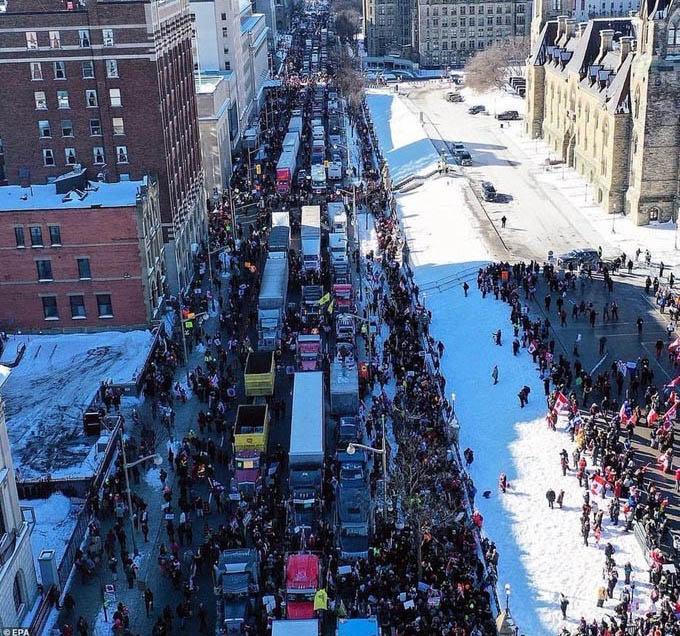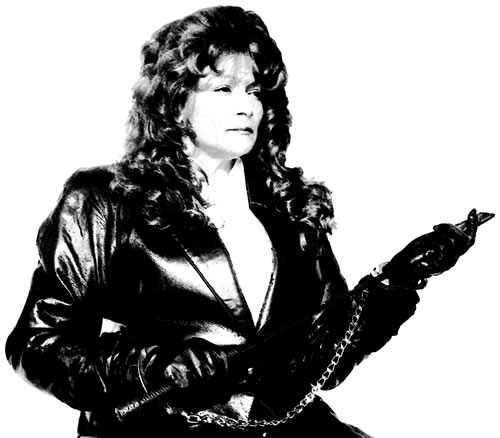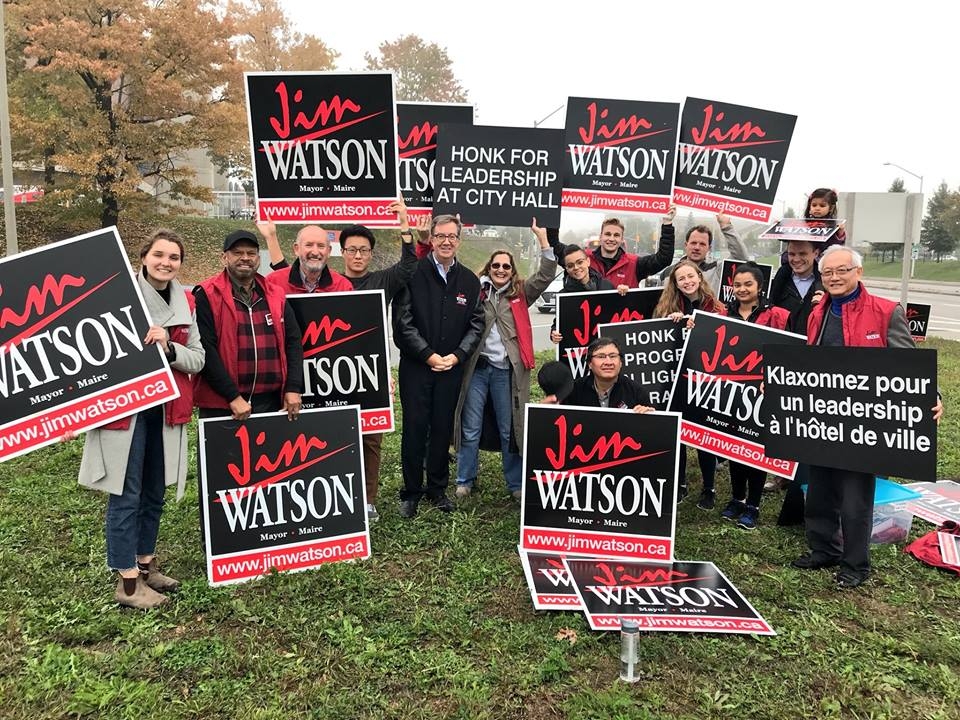
Woe Is Ottawa
Weighing in on City Plight Before Going to the Polls
As Ottawa’s population swiftly approaches 1 million, we have a chance to redefine ourselves. Do we want to continue our urban sprawl and house a massive suburban area? Do we want to build up — not out — and increase density by intensifying the downtown core, thus having buildings closer together and become more reliant on public transit? Do we want to spend $2.1 billion on a transit tunnel? Do we want our tourists to be approached by the army of homeless people in the ByWard market? Do we want Sparks Street to be a vibrant pedestrian street that showcases our diverse culture — or should we just give up and open it to traffic? Landscape Architect and urban expert George Dark puts it nicely: “All cities find their own time. Toronto became a huge multicultural focal point around the world; Vancouver became the vertical city among the mountains; Montreal became a city deep with culture and history; Ottawa is going through this busting out phase, and we need to determine how much it’s going to define itself in its own terms.” It’s not up to the federal government, the NCC, or the province. It’s up to us, Ottawa citizens, and with a municipal election coming up on October 25, 2010, there has never been a better time to shed light on some areas of distress with hopes that these plights will find solutions.
BYWARD MARKET
Last year I found myself at the Munich Airport in Germany with a few hours to kill. Like any good journalist, I made way to the bookstore and was flipping through the pages of The Lonely Planet—I’m always curious to see what people around the world are reading about Ottawa. Under the crime section it read, “It’s best to avoid Rideau Street between Sussex Drive and King Edward Avenue. In the daytime it’s cluttered with smoke-spewing buses and hoards of commuters, and in the evening it’s the preferred hangout for vagrants. The friendly ByWard Market can get a bit of an edge in the late evening with minor drug and prostitute traffic.” Having worked for tips in the ByWard Market to help with university tuition, this scathing remark came as no surprise.
In reading this disconcerting review halfway across the world, one has to wonder about Ottawa’s reputation on an international stage. Back in Ottawa, I trekked through the hoards of commuters, holding my breath through the smoke-spewing buses and head into Chapters on Rideau Street to see what other international publications are saying about our beautiful ByWard Market.
Sadly, they all echo a similar sentiment. Frommer’s writes, “In recent years the number of homeless people and panhandlers has increased,” and warns “two specific places to avoid are the pedestrian underpass on the South side of Confederation Square just West of the Rideau Centre and the main East- West ByWard Market streets between Dalhousie and King Edward.” a lot of readers across the globe being warned about our underbelly.
In the 2006 Municipal election, Larry O’Brien promised to solve homelessness in the ByWard Market through a “businesslike” method. Local political activist Shawn Menard suggests, “O’Brien’s solution was to put up these kindness meters,” they look like parking meters but the money donated goes toward solving Ottawa’s homeless problem, “but did they help anything? No. They were a huge failure because they weren’t a realistic solution,” and suggests “Ottawa needs to invest in affordable housing stock. Even if you look at it from a financial standpoint, it makes sense: Affordable housing costs about $18,000 a year per person, but it can cost $100,000 to keep them on the street because of the services they are using.”
Ottawa is the Capital of one of the greatest countries in the world, and the ByWard Market is without a doubt the epicentre of hustle and bustle. Perhaps it’s time we vest a little more interest in our reputation abroad and instead of wasting time and resources on utterly useless solutions we should spend more time considering real solutions, like affordable housing.
SPARKS STREET
Sparks Street never used to be a dump. In fact, it attracted thousands of tourists and locals daily looking to shop and dine. But as far back as most memories go, Sparks Street has suffered from an unfortunate decline in pedestrian traffic. Go there after sunset and you’ll hear crickets. Have you ever graced a piazza in Italy? On any given night, they are full of people sipping espresso, enjoying gelato or simply people watching.
Copenhagen, the capital of Denmark, shares a similar population and demographic to Ottawa. Their pedestrian Street, Strøget, sees up to 250,000 people every day. The potential for Sparks Street to be great is there, but why has it been under utilized for so long? Most would argue, because it’s a logistical nightmare. Trying to find whose in charge of Sparks Street is like playing Where’s Waldo with a blindfold on.
According to Jean Wolff from the NCC, “The entire north side (closest to Parliament) belongs to federal Public Works,” and as for the south side, “33.8 per cent is privately owned, 49.5 per cent is federal Public Works again, and only 16.7 per cent is the NCC.” It should go without saying that the NCC is willing to take only 16.7 per cent of the blame… if that.
But, the NCC’s mandate in accordance to the National Capital Act is to “organize, sponsor or promote such public activities and events in the National Capital Region as will enrich the culture and social fabric of Canada.” Well, what’s wrong Sparks Street? Can’t it play a role in enriching the culture and social fabric of Canada? Even with its claimed 16.7 per cent of ownership, the NCC’s assets on Sparks Street must be in the tens of millions, and yet nothing happens. What about Winterlude? Surely they could facilitate an ice sculpture display, or for that matter, a Bluesfest stage? Or incorporate the Jazz Festival? Or even the Tulip Festival? These aren’t ground breaking ideas, so why haven’t any been implemented?
Sad thing is, when things do happen on Sparks Street, it’s usually haphazard. Dr. Bruce Firestone asks, “Why does the City spend $5.5 million on cobblestone walkways and fountains that barely work,” and suggests “it’s like rearranging the deck chairs on the Titanic.” But Sparks Street doesn’t have to sink. Dr. Firestone exclaims “fixing Sparks is no secret; the solution is the same for any street or community. We need to follow the neo-urbanism movement and have at least 35,000 people living within a 10 minute walk.”
The City Councillor that represents Sparks Street, Diane Holmes, agrees that Sparks is in need of more housing close by, and points out that when sold and rezoned the old Ottawa Technical High School site would allow for 1,000 extra units to be built. So, 1,000 down and 34,000 to go!
Having so many different players on Sparks Street isn’t working. Something needs to be done. The NCC, the City, The BIA, the private owners, and the federal Public Works need to work together or somebody needs to step up to the plate and take charge. Sparks Street is bursting at the seams with potential; we just need to harness it.
DYSFUNCTIONAL COUNCIL
For the most part, Ottawa citizens ignore municipal politics. It’s a government city and federal matters often overshadow city affairs. Trouble is, nothing affects our day to day life more than the decisions made in the Council Chambers.
This lack of citizen engagement is starting to rub off on City Council— who as of late has seemed a little too laissez-faire about things. Part of this problem can be blamed on Ottawa’s raging incumbency issue, which, as Shawn Menard points out, “is a huge problem in Ottawa. After two straight elections where no incumbents lost a bid for re-election, it has some hoping for a cleaning of the house similar to what Crombie and Sewell did in Toronto in the 1970s.
But George Dark suggests it’s not as bad as many suspect, stating our Council isn’t any more or less dysfunctional than any other big city, “There’s maybe a tendency to rely on the government for a solution and to think the government will quickly deliver a solution.” Perhaps that is too much to ask for, but whether Ottawa expects too much from the government or not, there is a problem.
A few years back the CBC ran a story about an Ottawa business having to pay $45,000 in fees to relocate in a similar neighbourhood. So it packed up and went to Gatineau were it was significantly less expensive, the process went faster and the City even provided a free all day street parking pass.
Average people running small businesses should not need to pay exorbitant amounts to simply relocate. They shouldn’t need to cut through yards of red tape or pay for a planning consultant. These kinds of regulations are detrimental to our entrepreneurial spirit. It’s no wonder Ottawa ranks 9th in Canada when it comes to small business growth.
If we are going to take economic growth seriously, we need to foster a friendly environment to do business. As it stands, there’s not much that is friendly about it.
TRANSIT
How long have we been hearing about Ottawa’s transit debacle? The same song has been playing like a broken record for the past… how many years? Ottawa’s transit system has been inadequate well before the 55-day bus strike. Shawn Menard argues, “you have a bus strike that cost the city over $500 million that simultaneously debilitated small businesses and further eroded public trust in the system and what’s their genius marketing campaign to improve ridership? A 5.4 per cent rise in fares slated for next year. That compounds to just over 30 per cent in the past 3 years.” How raising the cost, again, is supposed to increase ridership is beyond me.
Another transit issue that needs to be solved is the east-west tunnel system that will cost $2.1 billion and won’t be complete until 2031. Menard insists, “There are less expensive, equally effective options are available now,” suggesting, “we extend the O-Train’s north and south rail lines right now— the tracks already exist,” But the powers that be have this fixation on an elaborate LRT tunnel and a huge fleet of new buses.
If you missed the headlines, the fleet of new buses came from a “limited time offer” that New Flyer so graciously extended to Ottawa. New Flyer offered us a 19 per cent discount on 226 buses. The City was only planning on buying 80 new buses but Councillors voted 18-3 in favour of an impulse buy that cost taxpayers $155 million. But wait, since we bought the buses using borrowed money, we actually paid $210 million after interest. How much was that discount again?
Yes, repairing the older buses was costly, and the new buses are more fuel efficient, but as Councillor Christine Leadman says “one week [to take the offer] to me, that’s not enough time. To me, that’s accommodating New Flyer,” and we have more buses spewing smoke on Rideau Street. The song is getting old and its high time proper decisions are made. If you’re going to build a ridiculously expensive tunnel to house a train, don’t buy 226 brand new buses—it makes no sense.













